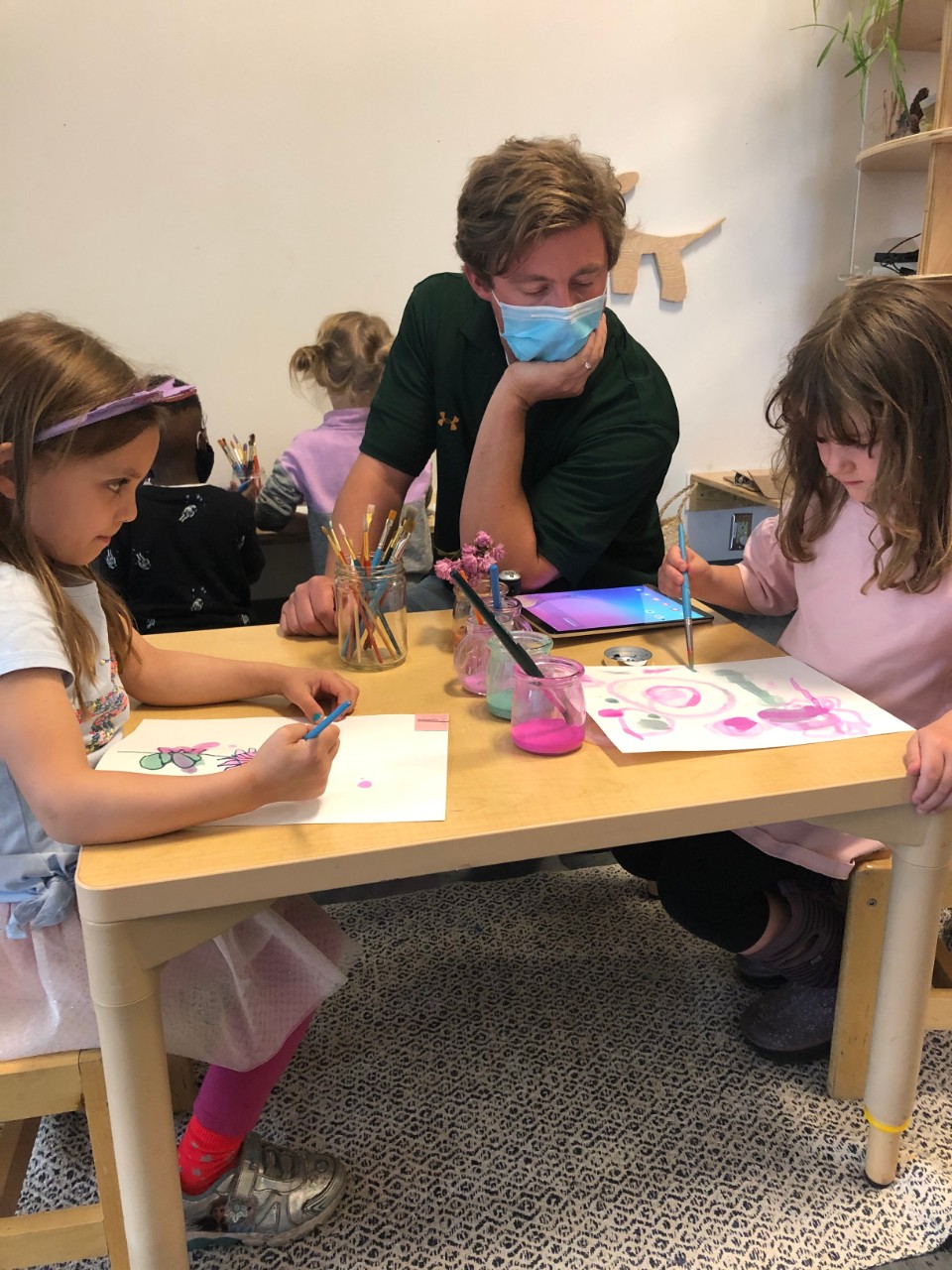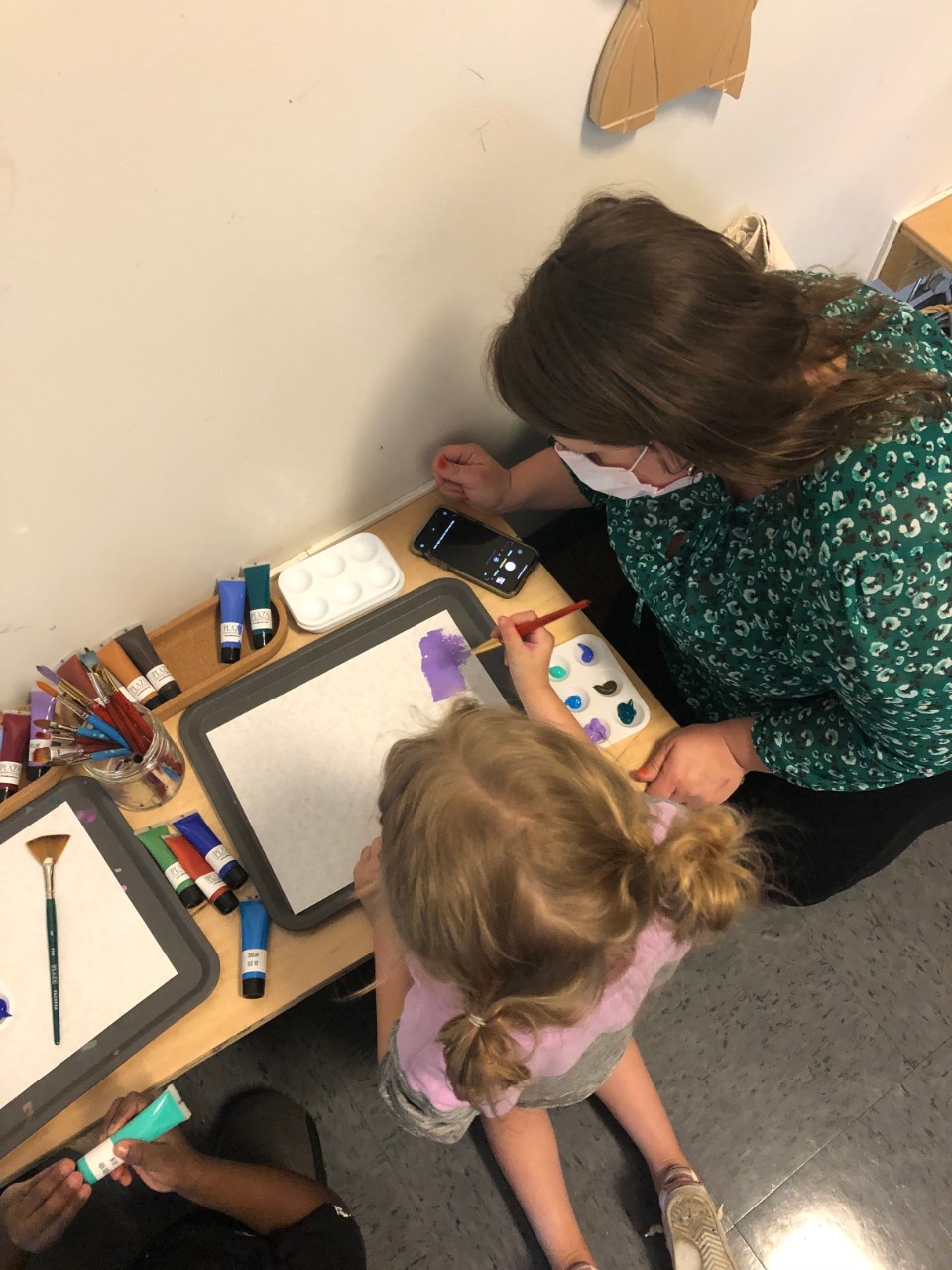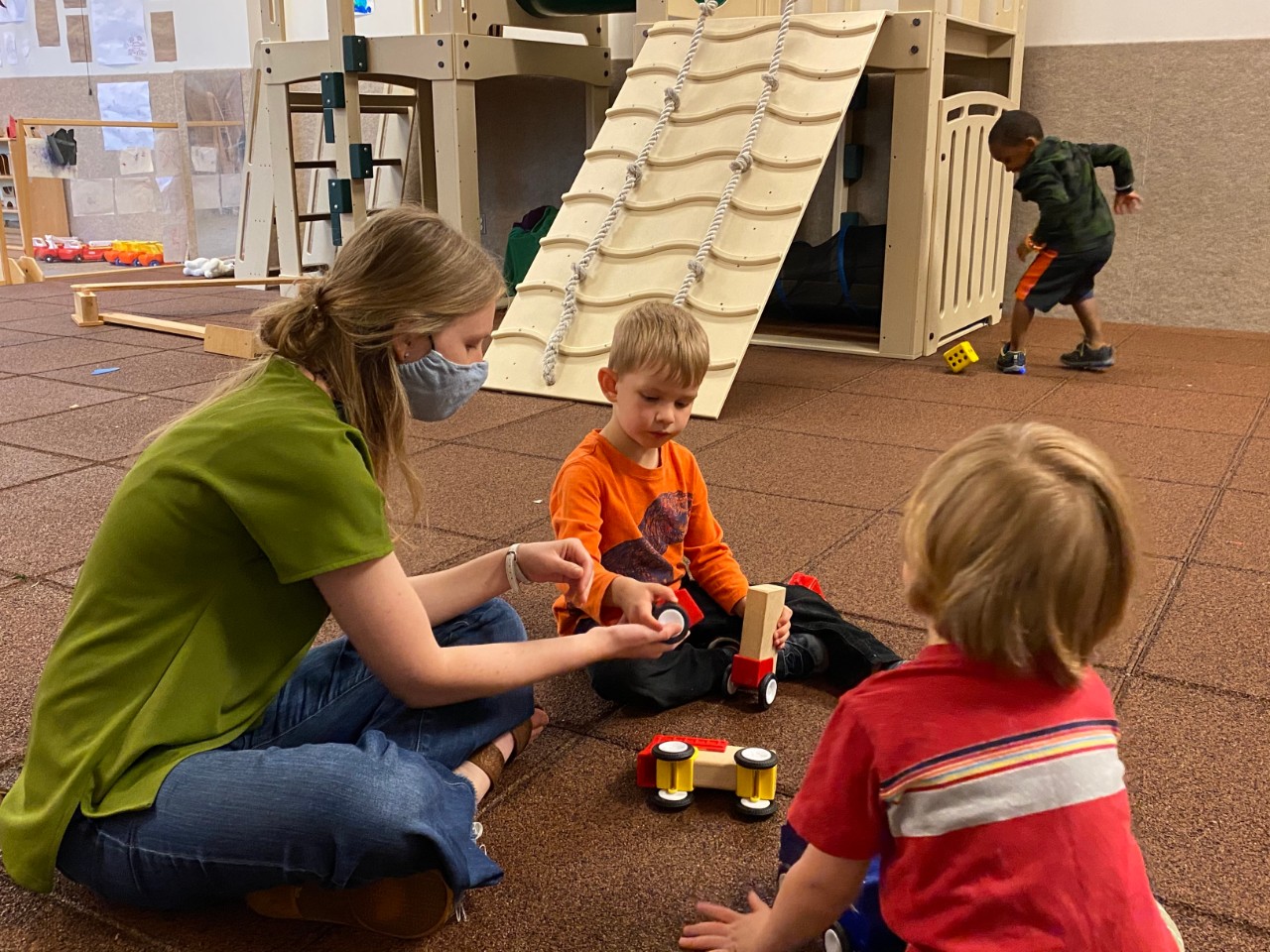
Unheralded but essential: Celebrating UC’s CECH alumni during Teacher Appreciation Week
These five Arlitt Center teachers rose above COVID-19’s challenges to provide stability and normalcy
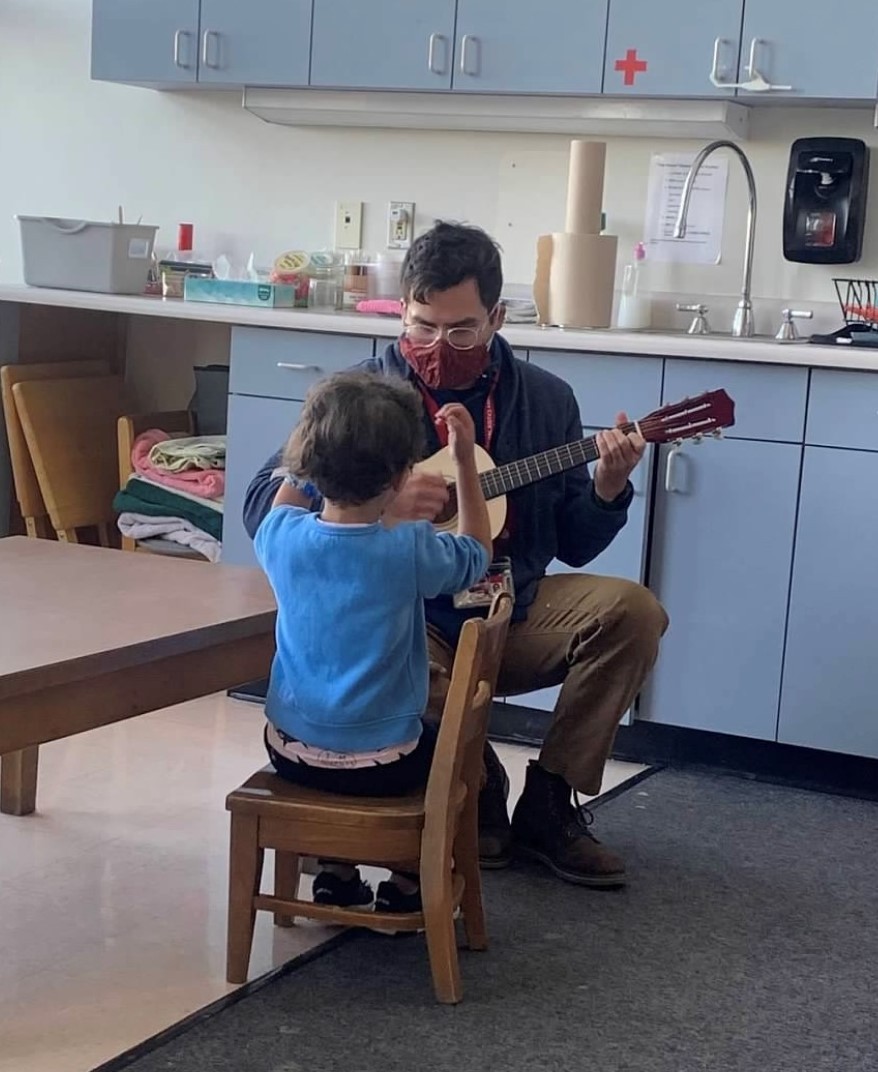
Ryan Miller, CECH '16, says facing the unknown during COVID-19 was the biggest challenge.
By: Cindy Starr
Amid the disruption, trauma and heartbreak of the COVID-19 pandemic, the Arlitt Child Development Center has remained a place of stability, love and magic. Despite formidable obstacles, Arlitt’s teachers — including 15 graduates from the UC School of Education — have drawn upon their creativity and grit to continue serving the essential developmental needs of more than 100 children ages 3 to 5. During Teacher Appreciation Week, as their school year winds down, these teachers and their administrators have ample reason to feel pride in a job well done.
“It’s been professionally challenging,” said Greg Schulman ’15, who earned a degree in early childhood education (ECE). “But at this point it feels kind of good to look back. You do get a little sense of accomplishment. You’re almost there.”
"I made it, and I’m still making it,” said Chawna Piper ’04. “I’m able to be here for the children and help them grow. I’m happy to be part of that.”
Located within the School of Education, the child development program is integral to the Arlitt Center for Education, Research, & Sustainabilty as a training ground for UC students, a research center for faculty and students, a resource center for the community, and a state-of-the-art learning environment for children from diverse cultural and socio-economic backgrounds. Named for Dr. Ada Hart Arlitt, Professor and founder of the original nursery school in 1925, the center serves children from diverse backgrounds through its Head Start and fee-based program.
I’m able to be here for the children and help them grow. I’m happy to be part of that.
Chawna Piper, CECH '04
When Ohio went into lockdown last spring, the shockwaves hit Arlitt like a tsunami. The school went virtual for several months. Teachers stayed connected to families, providing resources such as links to museum tours, and held Zoom group times so that children could sing or read a book together. The school launched an in-person pilot with a small number of students and teachers in July and then opened more fully in August, with approximately 60 percent of children returning and others participating virtually.
The stress was palpable. How contagious was the virus? How clean was clean enough? Did the teachers have to sanitize shared materials each time a child touched something? How would they teach very young children through a computer connection? What if someone got sick? Would they even be able to keep their jobs?
“There are so many layers of exhaustion,” said Rachel Konerman ’02, ’15, a PhD candidate and Early Childhood Education Instructor who works with children in the project-focused Arlitt Studio and supports the professional development of Arlitt teachers. “There is this level of exhaustion that comes from the unknown. There is this level of exhaustion that comes from worry: Am I going to get sick and take something home to my family? How am I going to keep the children from getting sick? Are we making the right decision by opening? All of these things are underlying a job that is already emotionally draining. We bring our whole selves to this job and do it with our whole hearts and our whole minds and our whole attentions.”
There were weeks, Konerman said, when the staff was “worn out to tears.” Almost every teacher experienced some type of personal loss, “whether it was with relationships or stress at home or truly losing somebody.”
For Ryan Miller ’16, facing the unknown was the biggest challenge. “Especially at the beginning of the year, meeting families and hearing their really valid questions, such as, ‘What if this happens? Or this happens?’ And not really having the answers. Everything was up in the air.”
For Piper, the transition was like being caught in a whirlwind. “I didn’t know whether I was coming or going,” she said. “I had to figure out how to work from home, and I didn’t know anybody. I met my co-teacher on Zoom.”
Still, there were positives, including Arlitt’s multiple funding streams. Head Start continued to provide funding, with flexibility in enrollment and attendance expectations. Support also came from tuition payments, the Arlitt endowment, the City of Cincinnati’s voter-approved Preschool Promise and private grants. While other small preschools were forced out of business during the pandemic, Arlitt held, and all of its teachers remained employed.
Dr. Victoria Carr, ’01, Professor and Executive Director, credits Mary Beth Wright for creating a pandemic plan that supported children, families, and teachers in the most positive possible ways. The Center re-arranged space to sufficiently spread out its students and developed new health and safety protocols. Equally important, the teachers drew upon lessons they had learned while students at UC. For Schulman it was the value of collaboration, which enabled him to transition from a DIY mindset and welcome the tech-savvy skills of his co-teacher, Carmen Rietta. For Miller, it was the ability to navigate a crisis with families from different socio-economic backgrounds. And for Hanna Berwanger, ’15, ’20, it was the honing of her “teacher instincts.”
These skills spawned an unprecedented level of creativity. Berwanger, unsure whether she got “the luck of the draw or the short straw,” called upon her instincts and strong theoretical foundation after she was assigned to teach in the Phyllis Goldsmith Levinson Playroom, an indoor gross-motor play space affectionately dubbed the “muscle room.” During the pandemic, those alluring climbing areas were off-limits for large parts of the day. “It’s been challenging to use that space in a productive way,” Berwanger said. “My room is always high-energy. But there are only certain times of the day when they can go over to the gym.”
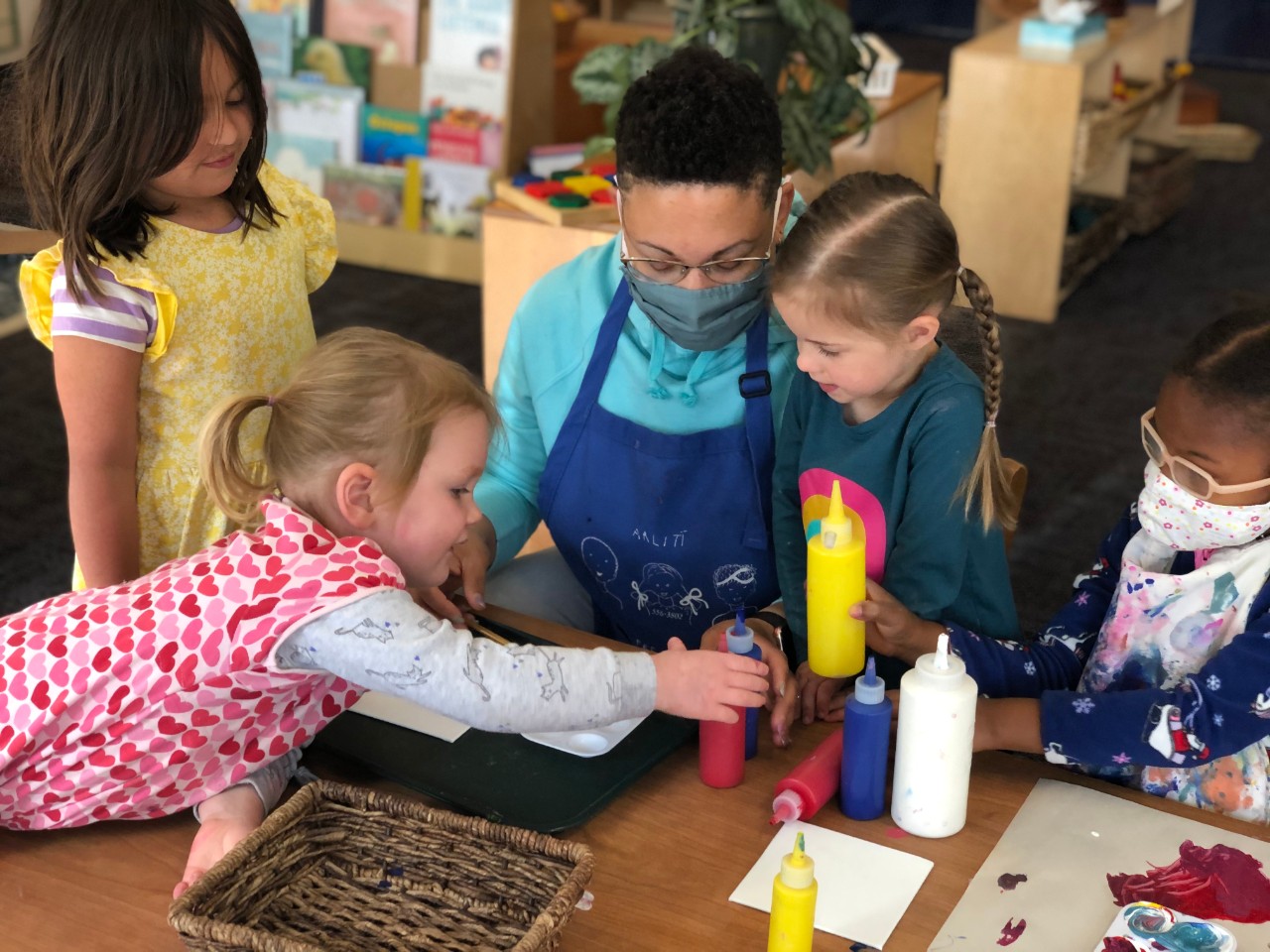
Chawna Piper, CECH '04, teaches at the Arlitt Child Development Center.
“Hanna learned and adapted throughout the school year, based on her observations as well as collaboration and input from colleagues, to productively use this unique classroom environment to meet children's needs,” said Arlitt Director Mary Beth Wright ’03, ’07. “The children now self-regulate and freely move between the climbing space and the more traditional classroom.”Schulman, meanwhile, ended up with a hybrid classroom, with nine students in attendance and six participating from home. He created a hand-washing rap and used a television and Zoom so that children at home and those at Arlitt could jointly engage in activities such as singing, watching videos and even decorating cookies.
“It was a challenge trying to come up with a lesson plan that seems valuable for preschool-age children to be learning on a computer,” Schulman said. “It’s not the most appropriate thing, but at this point when all of us are reflecting on the year, I think we’re really kind of happy with some of the relationships that were able to be built across the platforms. The children know each other’s names. They get excited when they see each other popping up on Zoom ... They’re good Zoomers now. There are fewer reminders about, ‘Let’s give someone else a chance to talk.’ They’re more cognizant of that now, more respectful.”
The teachers used Doodle polls to set up one-on-one meetings with parents, and they used ClassDojo, a secure platform with a Facebook-like news feed, to share photos and updates.
Still, it was an especially difficult year for many Arlitt families. Wright said the school has seen elevated instances of trauma. “We have many families right now who are going through hardships, including strained relationships, personal loss, economic instability, food insecurity and loss of other childcare support,” she said. “It all impacts the children.”
We bring our whole selves to this job and do it with our whole hearts and our whole minds and our whole attentions.
Rachel Konerman, CECH '02, '15
Wright praised the parents for going “all in” during a difficult time. And she and her team are grateful for the economic support they have received. In a tribute to the staff, the school has experienced only one positive COVID case among the children and no community spread.
At the same time, the teachers’ sacrifices have likely been underappreciated in the greater community. “Many of us have our own children who were not able to go to school,” Wright said. “We were leaving our own children at home to come here.”
“We came back in the summer, which was a little later than some schools but earlier than a lot,” said Konerman. “And all through that time, the public schools are not going back and staying virtual. And there was this question: As childhood educators, we’re essential workers, and yet at the same time sort of expendable, because it’s not as if we’re valued at the same level as essential workers. Not that I didn’t want nurses getting all their love, but nobody showed up at our front doors with pizzas to thank us.”
The Arlitt teachers signed and sent petitions to Ohio Gov. Mike DeWine in February stating their need for the vaccine but only recently were included in the state’s hierarchy of who could sign up for it. “It’s the kind of thing that will chip away at your morale,” Konerman said. “And yet here they are every day providing this incredible, stable, beautiful environment for children to learn and grow in.”
Indeed, Arlitt’s teachers and staff delivered an important product to children and families during a time when stability and human interaction were especially precious.
“This was like the race of death, right?” Konerman said. “I’m joking, but seriously, we never knew at any given moment what perils we would be facing. Normally, it’s exhausting to teach, and you always have this sense of accomplishment at the end of the year. Teacher Appreciation Week is always a nice moment, a pause. But this really was a hell of a year.
“The opportunity to tell the story of what we’ve been doing helps to kind of feed that teacher soul,” she added. “It’s almost as good as getting pizzas delivered!”
Feature Image: Hanna Berwanger, CECH '15, '20, works in the Phyllis Goldsmith Levinson Playroom at the Arlitt Center, an indoor gross-motor play space affectionately dubbed the "muscle room."
The UC Alumni Association exists to serve the University of Cincinnati and its 327,000+ alumni across the United States and throughout the world. Learn more about how to stay connected with your alma mater and get involved in more than 50 college-, interest- and location-based alumni networks, including the College of Education, Criminal Justice, and Human Services alumni network.
Related Stories
ADAAPT: Growing Student Ideas
December 19, 2024
Steven Doehler, an industrial design professor at the University of Cincinnati’s College of Design, Architecture, Art, and Planning (DAAP), says he prioritizes the entrepreneurial aspect of a student's design product – which led him to create HomeGrown Studio.
What happens when you give co-op students 90 minutes to make a...
December 19, 2024
UC DAAP students on co-op at the Rockwell Group, an architecture firm in Manhattan, are featured in a Wall Street Journal article about the firm's gingerbread house competition. Check out their gingerbread replica of UC's Crosley Tower.
Benefits of cooperative learning
Learn about the instructional method of cooperative learning, its definition, characteristics and benefits, as well as how it compares to cooperative education (co-op).
